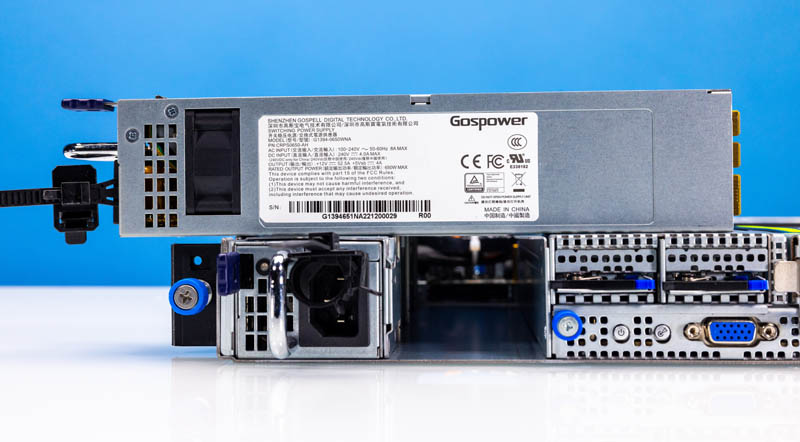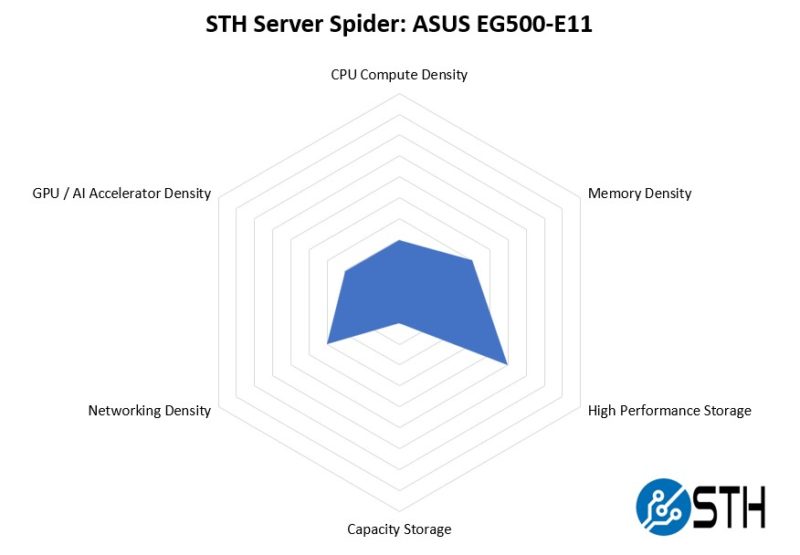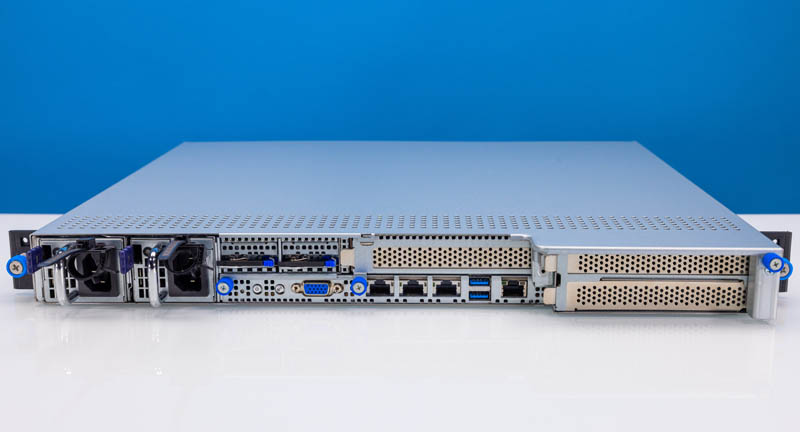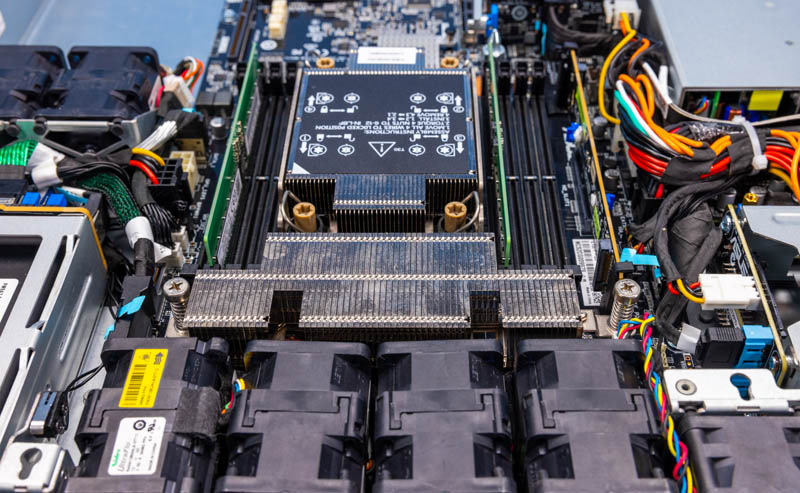ASUS EG500-E11 Power Consumption
The power supplies are Gospower 650W units.

Overall power consumption was solid for this class of system. We saw idle power in the 80-110W range. The maximum power consumption was 320-350W. There is a lot of room with 650W PSUs to add things like more drives or add-in cards to a system like this.
STH Server Spider: ASUS EG500-E11
In the second half of 2018, we introduced the STH Server Spider as a quick reference to where a server system’s aptitude lies. Our goal is to start giving a quick visual depiction of the types of parameters that a server is targeted at.

This is a really interesting system. While on one hand, there are only two 2.5″ NVMe bays, there is actually a lot of storage in this system. We have two internal 2.5″ bays, two E1.S front bays, and two internal M.2 SSDs. It is a bit strange since it has pairs of SSDs, but one is unlikely to use the same SSDs in each pair of mounting points. Usually, there are two or three options in a server, but very rarely four. Still, this system is absolutely packed for a 1U short-depth server.
Final Words
This is the type of server that is always exciting to review. Instead of a mainstream 1U or 2U server, this is designed specifically for racks that have limited space and need (mostly) just front access for I/O, or at least for cabling. The inclusion of not just dual 10Gbase-T but also a huge number of storage options in such a compact chassis was somewhat wild. We just hope production versions get better labeling on the chassis exterior.

The other big find was the Intel Xeon Gold 6438M which is a 32 core, 205W TDP 4th Gen Intel Xeon Scalable CPU. It performed almost as well in this cramped system as in a large 2U server, so that was a great result. For folks who need more cores, performance, memory, and faster I/O than what the Xeon D series offers, this makes a lot of sense.

When we first saw this server at SC22, it was one that looked very exciting. When we got it in for review several months later, it had gone through some tweaks, but it added features like the rear 2.5″ NVMe bays that make it even more intriguing. Hopefully, STH readers enjoyed seeing this packed edge server as well.




After reading the article on the ASUS EG500-E11 review, I’m truly impressed by the detailed insights provided about this upcoming 1U Edge Intel Xeon Server. The article offers a comprehensive overview of the server’s features, specifications, and capabilities. The in-depth analysis of its performance, power efficiency, and potential use cases provides valuable information for those seeking a powerful and efficient server solution. The inclusion of technical details along with real-world applications showcases a thorough evaluation of the product’s strengths and potential benefits. This type of review is immensely valuable for IT professionals and businesses looking to make informed decisions about their server infrastructure. The article’s focus on providing a balanced perspective and highlighting both strengths and areas for consideration demonstrates a commitment to delivering accurate and unbiased information. Overall, it’s an informative and well-structured review that equips readers with the knowledge they need to assess the ASUS EG500-E11’s suitability for their specific needs.
Surely they just put the rack ears on the wrong end of the case? Who in their right mind would put the PSU connectors on the front?
Super common on things like carrier racks. If you look up Open vRAN servers, for example, this is extremely common, but it depends on the customer/ country.
I’ve got to love the aggressively utilitarian design. No aggressively-branded and structurally irrelevant plastics kit; or bezel that eats 10% of the airflow in order to look cool in the cold aisle glamor shot that most units will never actually see. Just the actual computer.
“ASUS ahs…” in page 1 should be “ASUS has…”
Otherwise, this article is as densely packed with good information as the server’s chassis.
Looks like a very interesting system for people looking for some decent compute specs in a shallow rack. Wouldn’t be surprised to find SMBs deploying these on-prem as their only server.
As you the article pointed out, the storage options are oddly diverse. The use cases exist for population each set of bays, although I wonder if, with the production models or subsequent years’ models, ASUS will unify the various options down to one or two combinations of drive types and form factors vs. offering M.2, E1.S, 2.5″ NVMe and 2.5″ all in the same chassis. This unit’s offerings are a hodgepodge, but that could be a hallmark if the transition to newer standards.
I’ll keep my eye out for the final configurations in any case.
It looks like and entry-level Dell server with better features like the U2-NVme slots.
Nevertheless, what’s about reliability after 5 years ? Asus notebooks are going so bad after warranty ended,
I do not trust them anymore. I’m still using DELL R210, R610, R820 without any trouble.
The wrong place of rack ears is incredible. Is there holes to revert them on the other side ?
Who has PDUs on the rack front side ? I just revert my 24 x SFP+ switch to the back of my 42U rack since there is no patch for that on the front side, everything else has disks and controls switches on the front.